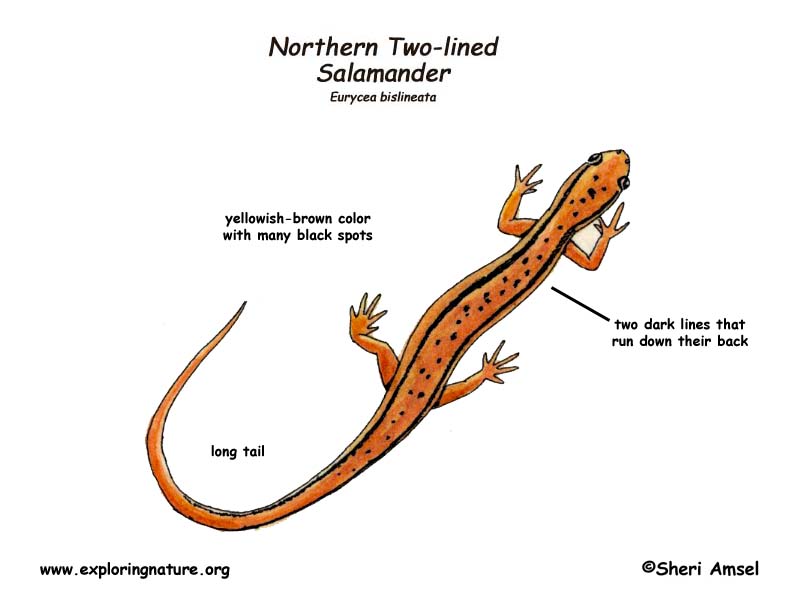

They are found in the eastern part of Southern Canada and the U.S.
They are found in or near flowing streams with rocky bottoms.
They reach less than 4 inches long and are a yellowish-brown color with many tiny black dots. They have 2 dark lines that run down their back ending in spots on their tail.
They will hide during the day under flat rocks and logs.
They eat insects and other small animals like snails and earthworms.
Trout will eat young salamanders.
They lay their eggs in a mass underwater, under a rock or log. After they hatch, they breath with gills for up to 3 years before turning into adult salamanders.
Kingdom: Animalia
Phylum: Chordata
Subphylum: Vertebrata
Class: Amphibia
Order: Caudata
Family: Plethodontidae
Subfamily: Plethodontinae
Genus: Eurycea
Species: E. bislineata
When you research information you must cite the reference. Citing for websites is different from citing from books, magazines and periodicals. The style of citing shown here is from the MLA Style Citations (Modern Language Association).
When citing a WEBSITE the general format is as follows.
Author Last Name, First Name(s). "Title: Subtitle of Part of Web Page, if appropriate." Title: Subtitle: Section of Page if appropriate. Sponsoring/Publishing Agency, If Given. Additional significant descriptive information. Date of Electronic Publication or other Date, such as Last Updated. Day Month Year of access < URL >.
Amsel, Sheri. "Salamander (Northern Two-lined)" Exploring Nature Educational Resource ©2005-2024. December 13, 2024
< http://www.exploringnature.org/db/view/56 >

